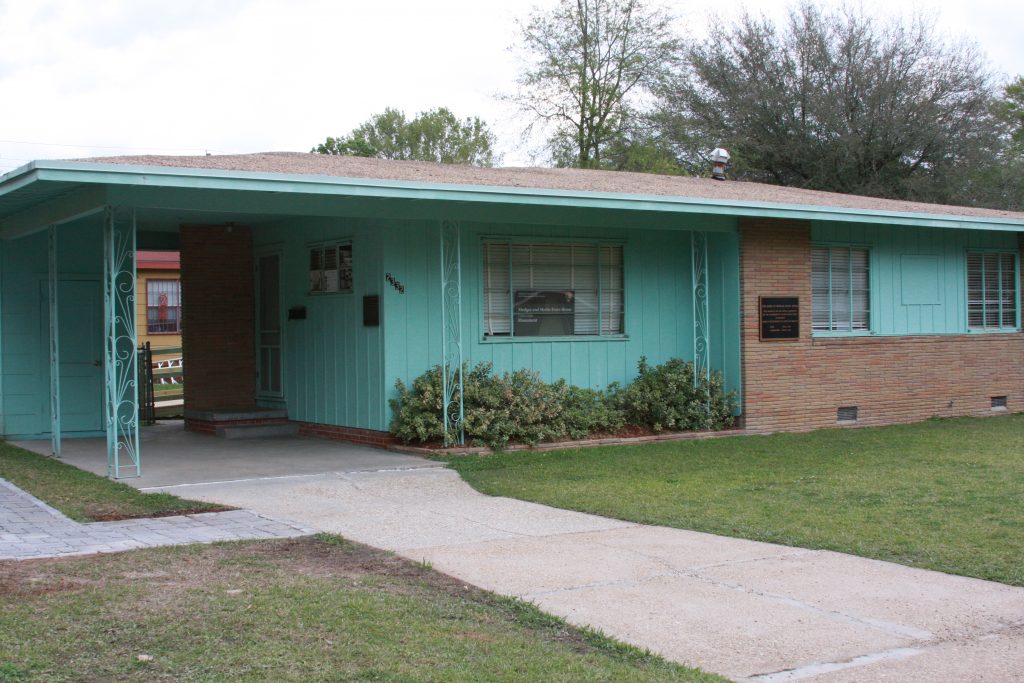March 31, 2023 @ 16:00 CDT
Site Visit #78
Medgar Evers served in the U.S. Army during the latter years of World War II, participating in the Normandy invasion and subsequent battles across western Europe. Following the war, he completed his high school education and ultimately received a bachelor’s degree from Alcorn A&M. He returned home thinking life would be better, having served his country. He was wrong.
But in 1954, following the Brown v. Board of Education decision ending school segregation, the University of Mississippi Law School still denied him admission. His attempts to end the blatant discrimination of Mississippi caught the attention of the NAACP and he soon found himself the Mississippi Field Secretary for the organization.
This job required that he move to Jackson, the state capital, and his family moved into a modest house in a new subdivision in northwest Jackson. He immediately became the target of threats including death threats, which forced his family to stay away from windows, crawl on the floor, and take other precautions within their own home just to try to stay safe.
That still was not enough. On the evening of June 12, 1963, a racist coward hiding in nearby bushes shot Evers in his back as he stood in his carport. He died shortly afterward. Byron De La Beckwith was arrested almost immediately, in possession of the murder weapon (a high-powered rifle) with his fingerprints all around the site of the shooting. He faced two trials, both ending in deadlocks as the all-male, all-white, and mostly racist jury would not convict.

There is no statute of limitations for murder, and Beckwith was finally convicted some 31 years later and spent the rest of his life in prison.
The Medgar and Myrlie Evers Home National Monument is the house where the assassination took place. This is a very new site, and the house itself is not open to the public. One can stop in front of it, take photos of the outside and read the signs on the property (I did all of that). On occasion, guided tours are available, but the next one was almost a week after my visit.
I can understand the issues that are slowing the Park Service’s efforts to open this site fully. The biggest issue is that this is still a residential area with people living in houses on either side and across the street. I’m sure those people are not too keen on having a lot of traffic on their street. Most likely, at some point, the Park Service will need to buy out one or two neighbors to create a small parking lot and visitor center.
For now, Passport stamps and brochures are available at the Mississippi Civil Rights Museum in downtown Jackson. This is one-half of the “Two Museums” complex, with the other half holding the Mississippi History Museum. I decided to visit both as the admission was reasonable (and in fact, I got in for free as their “systems were down” when I arrived so they could not take money).
I wasn’t sure what to expect in the Civil Rights Museum, but I found it to be very well done and very informative. And huge! I would have liked to read every display in every section, but I only had two hours until closing! One exhibit recalled the murder of three college students in 1964.
I recognized this story as it was featured in a made-for-TV movie in the late 1970s. I saw the show while a student at Miami University (that’s the one in Ohio). The reason I remember is that the opening scene starts at Western College, which was adjacent to Miami and by the time I attended, had been incorporated into Miami. In 1964, as part of the “Freedom Summer”, students registered at Western College before heading south to help with voter registration.
The victims of this murder had been part of this group. Once in Mississippi, they were “arrested” by local police, taken to a remote area, and murdered.
I do recommend the museum to anyone visiting the area. It will always confound me that people can have such extreme hatred toward an entire group of people, but sadly history is full of too many examples.
Steve